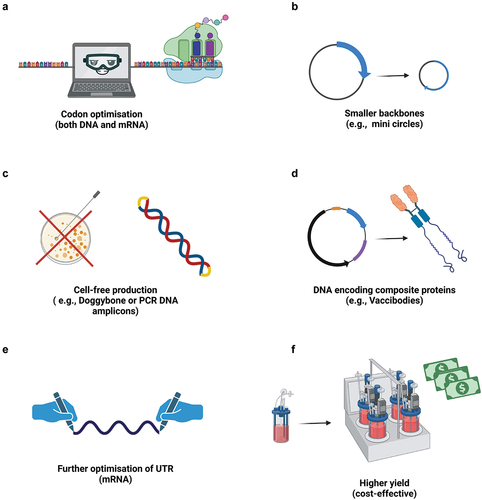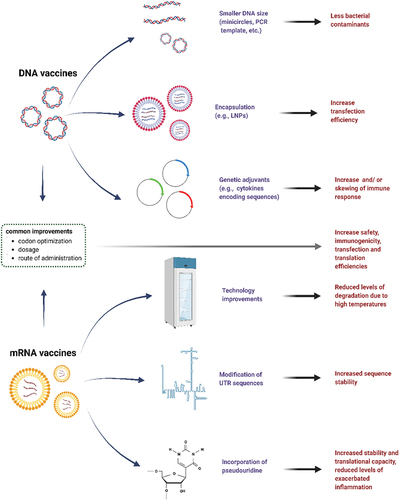Figures & data
Figure 1. Enhancing genetic vaccine design: strategies to boost immunogenicity. several strategies can be used to elicit higher immunogenicity of genetic vaccines at the design level, such as (a) codon optimization (fine-tuning the genetic code for heightened expression), (b) compact DNA plasmid backbones (employing smaller, more efficient genetic constructs), (c) utilization of cell-free products (enhancing vaccine components), (d) encoding chimeric proteins (combining beneficial elements for a stronger response), (e) optimized UTR in mRNA sequences (improving translation efficiency), and (f) enhanced culture yields (increasing the availability of essential components for vaccine production). Figure created with BioRender.

Figure 2. Summary of possible common and individual improvements that may be underway for DNA and mRNA vaccines. common improvements for genetic vaccines could be achieved by advanced codon optimization, optimized dosage, and different routes of administration. However, while DNA vaccines may potentially achieve improved safety and immunogenicity with smaller templates or minicircles, encapsulation into LNP and addition of adjuvant encoding sequences, specific improvements for mRNA vaccines may instead require technology advances and sequence modifications aimed at improving stability and at reducing levels of inflammation and potential side effects. Figure created with BioRender.

Table 1. Summary of the advantages, disadvantages, and potential improvements of genetic vaccines.
